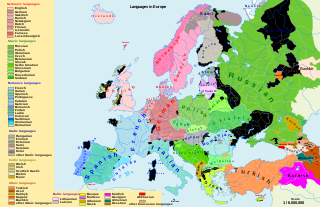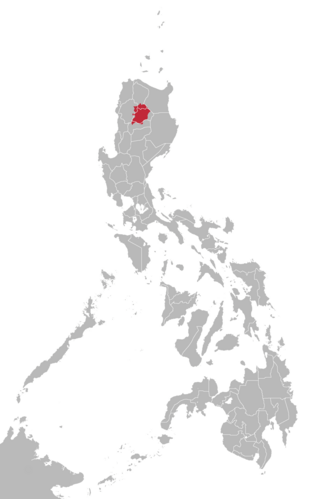Related Research Articles

There are over 250 languages indigenous to Europe, and most belong to the Indo-European language family. Out of a total European population of 744 million as of 2018, some 94% are native speakers of an Indo-European language. The three largest phyla of the Indo-European language family in Europe are Romance, Germanic, and Slavic; they have more than 200 million speakers each, and together account for close to 90% of Europeans.

Kalinga is a dialect continuum of Kalinga Province in the Philippines, spoken by the Kalinga people, alongside Ilocano. The Banao Itneg variety is not one of the neighboring Itneg languages.

Bontoc (Bontok) is the native language of the indigenous Bontoc people of the Mountain Province, in the northern part of the Philippines.
Wetarese is an Austronesian language of Wetar, an island in the south Maluku, Indonesia, and of the nearby island Liran.
Ngiri is a Bantu language closely related to Lingala.
Yaka, also spelled Iaca and Iyaka, is a Bantu language spoken in the Democratic Republic of the Congo and Angola. There are two dialects, Yaka proper, which comprises 99% of speakers, and Ngoongo. The alleged varieties Pelende and Lonzo are political rather than ethnolinguistic entities.
Ding is a Bantu language that is spoken in the Democratic Republic of Congo.
Phupha, or Downriver Phula, is a dialect cluster of Loloish languages spoken by the Phula people of China. There are four principal varieties, which may be considered distinct languages:
Southern Luo is a dialect cluster of Uganda and neighboring countries. Although Southern Luo dialects are mutually intelligible, there are six ethnically and culturally distinct varieties which are considered to be separate languages socially.
Ede is a dialect continuum of Benin and Togo that is closely related to the Yoruba language. The best-known variety is Ife.
Kayan is a dialect cluster spoken by the Kayan people of Borneo. It is a cluster of closely related dialects with limited mutual intelligibility, and is itself part of the Kayan-Murik group of Austronesian languages.
Mumeng is a dialect chain of the Austronesian family in Morobe Province, Papua New Guinea. Dambi–Kumalu and Patep–Zenag–Gorakor have a degree of mutual intelligibility. Kapin may belong as well.
Kulisusu is an Austronesian language of Southeast Sulawesi, Indonesia. It is part of a dialect chain with two minor languages, Koroni and Taloki.
Lamaholot, also known as Solor or Solorese, is a Central Malayo-Polynesian dialect cluster of Flores, Indonesia. The varieties may not be all mutually intelligible; Keraf (1978) reports that there are 18 languages under the name.

Itneg is a South-Central Cordilleran dialect continuum found in the island of Luzon, Philippines. This language and Ilocano are spoken by the Itneg people in Abra.
Kimaragang (Marigang), Tobilung, and Rungus are varieties of a single Austronesian language of Sabah, Malaysia. The three varieties share moderate mutual intelligibility. Children are not learning it well in some areas.
Taupota is an Oceanic language of the Milne Bay Province, Papua New Guinea. It appears to be a dialect chain, with southern varieties called Wa'ema and western Wedau.
Masela (Marsela) is the language of Marsela Island in southern Maluku, Indonesia. Regional varieties are distinct; Ethnologue counts it as three languages.
Atatláhuca–San Miguel Mixtec is a diverse Mixtec language of Oaxaca.
References
- ↑ Kopkaka at Ethnologue (18th ed., 2015) (subscription required)
Kwer at Ethnologue (18th ed., 2015) (subscription required) - ↑ Endangered Languages Project data for Kwer.
- ↑ "Kopkaka". Peta Bahasa (in Indonesian). Retrieved 2024-06-25.